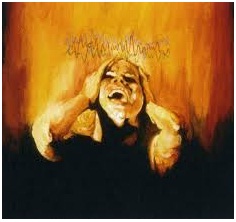Thunderclap Headache Causes, Symptoms, Diagnoses and Treatment

What Is Thunderclap Headache?
A thunderclap headache is a headache that is severe and sudden-onset. It is defined as a severe headache that takes seconds to minutes to reach maximum intensity.
It can be indicative of a number of medical problems, most importantly subarachnoid hemorrhage, which can be life-threatening.
It may also be indicative of a potentially recurring headache disorder, known as primary thunderclap headache.
Causes Of Thunderclap Headache:
Thunderclap headaches can result from a number of primary conditions.
These include:
- Subarachnoid hemorrhage
- Cerebral venous sinus thrombosis
- Cervical artery dissection
- Hypertensive emergency
- Spontaneous intracranial hypotension
- Stroke
- Retroclival hematoma
- Pituitary apoplexy
- Colloid cyst of the third ventricle
- Meningitis
- Reversible cerebral vasoconstriction syndrome
- Primary cough headache, primary exertional headache and primary sexual headache
- Primary thunderclap headache
Symptoms Of Thunderclap Headaches:
Thunderclap headaches are known to be intense.
Symptoms include pain that:
- Strikes suddenly and severely — sometimes described as the worst headache ever experienced
- Peaks within 60 seconds
- Lasts anywhere between an hour and 10 days
- Can occur anywhere in the head, and may involve the neck or lower back
- Can be accompanied by:
- nausea
- vomiting
- loss of consciousness
Diagnosis Of Thunderclap Headaches:
The following tests are conducted in order to diagnose thunderclap headaches;
- CT scan
- MRI
- Spinal tap
- magnetic resonance angiography
Treatment Of Thunderclap Headaches:
There is no one treatment for thunderclap headaches. They vary in accordance to the underlying cause of the disease.
By : Natural Health News




